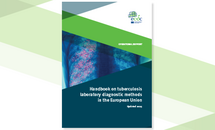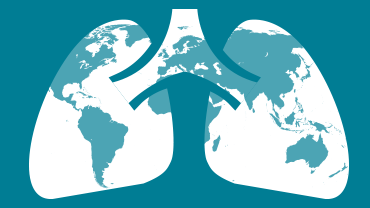Handbook on tuberculosis laboratory diagnostic methods in the European Union - updated 2025
The aim of this handbook is to provide members of the European Reference Laboratory Network for Tuberculosis (ERLN-TB) and other laboratories involved in the diagnosis of TB with an agreed list of key diagnostic methods, ranging from microbiological diagnosis of active TB to the diagnosis of TB infection. This handbook offers a single source of reference by compiling all methods, with a strong focus on standard (reference) and evidence-based methods.
Tuberculosis (TB) is a major cause of morbidity and mortality in Europe. High-quality laboratory diagnosis of TB is the basis for both individual patient treatment and surveillance.
In 2007, a survey of existing mycobacterial laboratory services and quality control practices throughout the European Union (EU) confirmed the key role of national reference laboratories (NRL) for TB and their services. The main conclusion of the survey was that a network of reference laboratories for TB could contribute to improving the performance of mycobacterial laboratories in Europe.
Based on these results, the European Reference Laboratory Network for Tuberculosis (ERLN-TB) was launched in January 2010 with the aim of strengthening TB diagnostics in the EU. ERLN-TB was funded and coordinated by ECDC. One or two officially nominated reference laboratories from each EU Member State joined the network, along with those in European Economic Area (EEA) and EU candidate countries.
Following the success of the ERLN-TB network, in 2014, 2018, and 2022 ECDC commissioned a renewal of the network (called the European Reference Laboratory Network for Tuberculosis, ERLTB-Net, ERLTB-Net-2, and ERLTBNet- 3 respectively) involving the same centres but anticipating the participation of institutions from the EU enlargement countries in the longer term.
The three main goals of the new network are: to support the harmonisation of laboratory methods within the EU/EEA; to develop External Quality Assurance (EQA) schemes; and to provide training activities within the network to ensure EU-wide capacity-building for TB diagnostics. One of the main activities conducted by the network was the development of a handbook of key diagnostic methods for TB, which was first published in 2011. It underwent updating in 2014 and 2018, as new scientific evidence became available, and this document represents the latest version, updated in 2022.
The aim of this handbook is to provide network members and other laboratories involved in the diagnosis of TB with an agreed list of key diagnostic methods, ranging from microbiological diagnosis of active TB to the diagnosis of TB infection. This handbook offers a single source of reference by compiling all methods, with a strong focus on standard (reference) and evidence-based methods.
The handbook will also contribute to the improvement of disease surveillance data for Europe: data sent to ECDC’s EpiPulse (The European surveillance portal for infectious diseases) and other surveillance systems should be robust and backed by quality laboratory diagnostics.
This edition of the handbook addresses the changing technological landscape that has emerged over the last decade, particularly with regard to molecular-based assays and genome sequencing. Much of this technology has led to a major shift in TB diagnostic activities with the development of multiple, large, and well-equipped diagnostic centres with similar capacity and skills to national reference laboratories (e.g. rapid molecular diagnostic tests, WGS, NGS). Conversely, other molecular diagnostic developments have moved us away from ‘big laboratory’ approaches and closer to ‘point-of-care’ devices. The two approaches are not mutually exclusive, and both bring advanced diagnostics closer to the patient. The handbook is designed to meet the needs of both centralised and decentralised service delivery models and recognises that the role of national reference laboratories will change significantly over the next few years.








